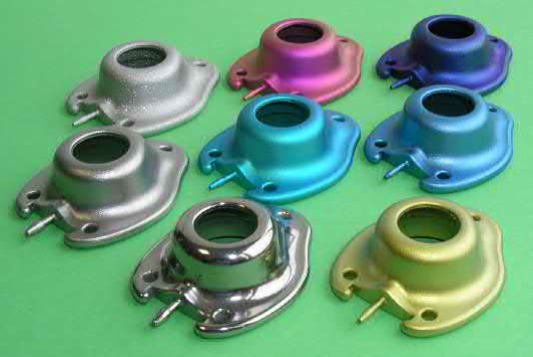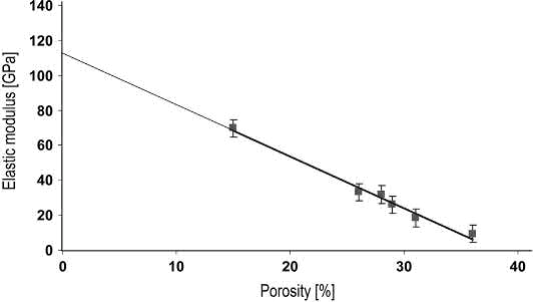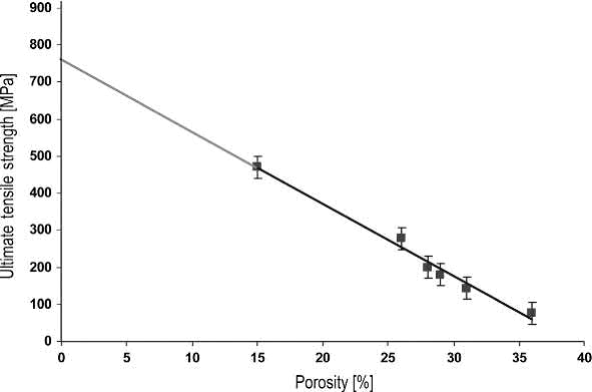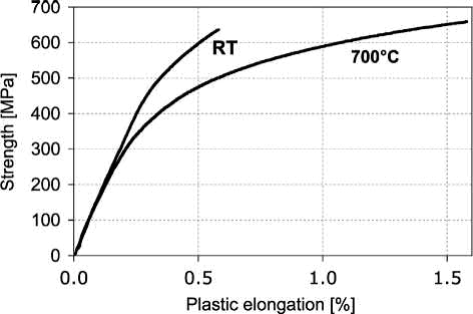Although MIM of titanium is developed quite well today and excellent properties can be achieved, widespread application is still missing. Probably a significant cost reduction could change this situation. Many different activities are under way aiming at a reduction of the powder or component price. They can be divided into the following:
more cost-efficient powder production techniques or replacement of the Kroll process;
replacement of expensive powder by lower-cost powder.
A high portion of the overall costs for titanium is caused by the reduction of the ore, which is commonly performed by applying the Kroll process. This is a multi-step process in which first the oxide is converted into chloride, and then the chloride is reduced to metal. Several attempts have been made to replace this cost-intensive technique by other methods or by developing new powder production techniques. Examples are described later.
Plasma-quench process
The raw material TiCl4 is used, which is dissociated thermally by means of a plasma arc. By rapid quenching, powder particles are formed. However, TiCl4 is rather expensive and the process is hard to control because several reactions are involved.
MHR, metal hydride reduction
This technique (Froes, 1998) applies calcium hydride for the direct reduction of titanium oxide according to the chemical formula TiO2+ 2CaH2!Ti + 2CaO + 2H2. The advantages are that only one step is needed, the powder is chloride-free and it is possible also to produce TiH2, which can be used as a raw material, as mentioned in Section 19.5.2.
Armstrong process
Basically, this is a modification of the Hunter process, working with sodium: TiCl4+ Na (molten)!Ti + NaCl. By a continuous process, production of both sponge and powder is possible. The drawback is again the rather high costs of the raw materials.
TiRO process
Here, TiCl4 reacts with Mg-powder in a fluidized bed reactor and by vacuum distillation titanium is separated from MgCl2. This process is continuous and results in very fine powder particles forming agglomerates.
FCC-Cambridge process
The Fray-Farthing-Chen (FCC)-Cambridge process is an electrolytic process where a cathode pressed from TiO2 pellets and a graphite anode are placed in a CaCl2 bath. Oxygen ions diffuse from the cathode and CO2 is formed at the anode: TiO2+C!Ti +CO2. Sponge, which can be crushed to powder, can be made, but the cathode production is rather cost intensive. In addition, high energy consumption has to be considered. However, this technique is considered as being most suitable for providing a significant cost reduction compared to Kroll processing and is commercially applied today. By adding oxides of other chemical elements, it is also possible to produce alloys.
To date, all processes still suffer from a high risk of impurity pickup and the costs for large-scale production are not clear in all cases. However, development continues and there is reasonable hope of producing lower cost powder of high quality in the future.
The flexibility of powder metallurgy opens the possibility to blend low-cost and expensive powders in order to reduce the costs of the raw material. For example, HDH powder of pure titanium can be mixed with gas-atomized alloyed powder or alloys can be made by blending of elemental powder, if prealloyed powder is not available or is too expensive for a given application. Powder blending is not only related to MIM but also to PM in general. Blending elemental powders for the PM production of alloys intended for subsequent conventional processing is the subject of many studies. Besides the reduction in costs, better and more homogeneous properties of the material compared to fabrication by ingot metallurgy can also be the reason for the application of the PM route and new alloys can be tailored rather easily.
However, when using lower-cost powders such as HDH-processed powder, it is important to bear in mind that this powder usually has a higher degree of contamination and interstitials than, for example, gas-atomized powder, as mentioned in Section 19.2.2. Thus, parts produced with such powders tend to possess rather low ductility. However, the blending with purer powder can be a good compromise between costs and mechanical properties, which is more than sufficient for many applications. Because the powders are available in different purities there is also a large range of possibilities for the ratio between price and achievable properties.
Alloys which are difficult to attain as prealloyed powders like Ti-6Al-7Nb or NiTi, both used in medicine, can be made by blended elemental powder metallurgy, as shown in different studies. Bolzoni, Esteban, Ruiz-Navas, and Gordo (2010) and Itoh produced Ti-6Al-7Nb by the blended elemental approach in order to compare the mechanical results in relation to the powders used, meaning elemental or made from master alloy. It was shown that good properties including reasonable ductility can be achieved (ultimate tensile strength of 830MPa and elongation of 11%), but in general the processing is more tricky than using prealloyed powder, which still leads to the best properties. In the case of NiTi, elemental powders are used because prealloyed powder is scarcely available and very expensive. Several studies are performed; some even under application of MIM, mostly aiming at the production of porous bone implants. Furthermore, nearly dense samples were produced with ultimate tensile strength of 1000MPa at a strain of 17%. In this case, very fine prealloyed powder with d50 of 11 was used.
Cost reduction is also one of the ideas behind using titanium hydride powder for PM processing. Observed green part densities up to 90% using fine TiH2 powder. They suggest that in addition to the lower costs its brittleness appears to be beneficial. At a pressure of 700MPa they found crushing of the powder leading to better compaction. However, it is not clear whether using ductile powder could lead to a similar result due to plastic deformation. The dehydration process is combined with the sintering process providing clean particle surfaces, leading to excellent sintering conditions. In addition, hydrogen is regarded as a getter for the oxygen, thus, additional pickup of oxygen can be eventually avoided. TiH2 powders are also used in MIM studies and high sintering densities of 98% and an elongation of 15% can be achieved.
Currently, there is much development in the field of finding lower-cost powders or more efficient technologies for production of powder and parts. One reason is the world-wide introduction of AM methods in industrial production. Techniques as direct metal deposition (DMD) also known as LENS (laser engineered net shaping) are quite flexible with regard to the geometry of the powder particles. However, powder bed based techniques like SLM and EBM rely on spherical powders. Thus, spherical powders, also beneficial for MIM manufacturing are much better available than a few years ago and their price is slowly decreasing. MIM benefits from the general trend to use PM for the production of raw material, even for conventional processing, and most probably the next few years will bring significant improvement in this field.
MIM of titanium has been introduced to the field of medical devices and used for several years, mostly for the manufacture of handles for surgical instruments or other parts of endoscopic or other instruments and devices. Here the great freedom in geometry provided by injection molding is exploited in connection with the low weight and basic biocompatibility of titanium. For these applications, which are not high load bearing, the use of Ti Grade 4 feedstock is absolutely sufficient and using MIM means usually a significant cost advantage compared to machining or casting. The progress in processing of titanium alloys, as mentioned previously, during recent years has led also Ti-6Al-4V or Ti-6Al-7Nb components becoming available to withstand even high loads of 700MPa or more. These alloys are suitable for MIM manufacturing of medical implants. Today, permanent implants made by MIM of Ti-6Al-4V are approved and available on the market, for example, the port system in Fig. 19.9 which is used for cancer therapy as a drug delivery device. An overview was given. Further literature about MIM of titanium for medical devices is the example. Along with Ti-6Al-4 V and Ti-6Al-7Nb, beta-titanium alloys have also been investigated to be processed by MIM.

Fig. 19.9 Commercial permanent implant (port system) produced by MIM of Ti-6Al-4V. Anodic oxidation enables the parts to be produced in different colors
Using MIM for the production of implants immediately raises the question of biocompatibility. In fact, MIM is a very clean process compared to conventional manufacturing technologies. Basically, the single binder constituents are chosen to be harmless against the body, such as paraffin or polyethylene. In principle, decomposition at high temperatures could generally lead to new substances, but here just carbon can be expected being stable at sintering temperature. Furthermore, if existing at all these substances would be trapped in pores after sintering and would cover the surface. In the first instance, they would have no contact with the body and in the latter case, they could be removed if necessary. Actually, to the author' knowledge no study shows any toxicity of MIM fabricated implants. Furthermore, the direct comparison with machined alloys shows usually a better cell growth on the MIM surface, which is probably due to the rougher surface. However, scientific publications of comprehensive studies are rare. Reviews on biocompatibility of MIM-processed titanium have been produced. The great interest of the medical industry in MIM of titanium is manifested in the fact that the first standards on MIM of unalloyed titanium, ASTM F2989-13, and of Ti-6Al-4V, ASTM F2885-11, focused on medical applications. The possibility of low-cost manufacturing of anatomically shaped implants is one of the motivations for this development.
MIM for the fabrication of medical implants is also interesting because of the possibility of generating porous components. These are beneficial with regard to bone in-growth. Pore sizes between 50μm and 500μm are usually regarded as adequate, depending on a possible demand for vascularization of the implant. Instead of applying a second process to coat the implant with a porous layer, as it is done with hip implants, the implant can be manufactured as porous in a single MIM process. Coarse powders and appropriate sintering parameters are used leading to high porosity up to 35%, for example, as shown. Alternatively, space-holders are added to the powder prior to feedstock production. These space- holders can be dissolved during or prior to debinding, for example, NaCl can be dissolved by water or PMMA by acetone. The space-holder technique is more complex, but allows a large range of possible and well-defined porosities to be realized. It should be noted that in both cases the injection molding process is more difficult compared to using standard feedstock. The large particles (powder or space-holders) influence the viscosity and even the diameter of gates, runners and so on must be taken into account. In biomedical applications, the desired pore size can be 0.5mm as mentioned previously. This means that the powder or space-holder dimensions also have to be in this range.
Besides improved osseointegration, porous components also show a reduction in the elastic modulus. Typically, the value of the elastic modulus is proportional to the relative density, as shown in Fig. 19.10. Thus, it is possible to adjust the stiffness to that of bone to avoid the so-called stress shielding effect. If the stiffness of the implant is higher than that of the bone, most of the load is focused on the implant. This leads to a degeneration of the bone, resulting in loosening of the implant. The elastic modulus of cortical bone is in the range 5-20 GPa. According to Fig. 19.10, MIM-processed Ti-6Al-4V possessing a porosity of around 35% shows a similar value. On the other hand, the strength of the material is reduced significantly, as Fig. 19.11 reveals.

Fig. 19.10 Dependence of the elastic modulus of MIM-processed Ti-6Al-4V on porosity

Fig. 19.11 Dependence of the ultimate tensile strength of MIM-processed Ti-6Al-4V on porosity
By two-component (2C)-MIM, it is even possible to realize implants with gradient porosity using two different feedstocks, one for a dense core and a second with spaceholders in order to provide a porous surface. Such a technique is shown where prototypes of a spine implant were made by 2C-MIM.
There are also studies on the combination of porous Ti-6Al-4V implants with hydroxyapatite (HA) made by MIM. While the titanium skeleton provides mechanical stability, HA is responsible for the bioactivity. An open porosity around 50% was created by this technique and the pores were filled by HA. Such implants should be excellent in contact with bone.
As mentioned in Section 19.5.2, processing of NiTi by MIM is possible too. It is a shape memory alloy and is mostly used because of its pseudo-elasticity providing a very large region of elastic deformation, which can be exploited, for example, in the field of surgical instruments. It is also used for stents in blood vessels, where the shape memory effect accomplishes the dilation of the stent by thermal activation, when it is situated in the right position during operation. NiTi is difficult to process conventionally and MIM can offer new possibilities for shaping desired geometries. The alloy is also thought to be an ideal candidate as bone implant material because of its inherent low elastic modulus. On the other hand, the high Ni content is the subject of discussion, because Ni is an element with a high allergenic potential.
Titanium aluminides are known as novel intermetallic light-weight alloys for hightemperature applications. Owing to their low density, high specific strength and stiffness, and a temperature capability up to 800℃, titanium aluminides are ideal materials for rotating and oscillating parts in combustion engines and gas turbines. In contrast to conventional titanium alloys, they consist exclusively of the intermetallic-phases α2 and γ and around half of the atoms are aluminum atoms. The composition of these alloys is commonly given in atomic percentage. Because they consist of intermetallic phases, titanium aluminides are very temperature-stable and resistant against oxidation, but also rather brittle. At room temperature (RT) plastic elongation is around 0.2% and at 700℃ this is only increased to about 2%. These properties mean that forging, machining and even casting of this alloy class are extremely demanding. Thus, at least for the production of relatively small and complex-shaped parts, MIM is regarded as a suitable and competitive production technique. On the other hand, because of the high affinity of titanium for oxygen and carbon, as discussed previously, the MIM processing of fine TiAl powders is also rather sophisticated. Two main challenges have to be overcome.
Sintering temperatures have to be close to the solidus line because of low diffusivity, which is typical for materials that are stable at high temperatures. This means grain growth and loss (e.g., of Al) by evaporation can be severe problems. In addition, titanium aluminides are very sensitive to the oxygen level. Commonly, a value around 0.12 wt% is regarded as the maximum.
The microstructure of titanium aluminides is very sensitive to the exact path through the phase diagram during sintering and cooling. By means of different cooling profiles, the mechanical properties can be influenced strongly. Accurate process control is necessary. The phase diagram of the Ti-Al system is rather complicated and several phase changes during cooling have to be considered. In comparison, Ti-6Al-4V is uncritical with regard to process variations because sintering takes place in the wide pure beta-phase region.
There is little in the literature regarding MIM of TiAl, but the latest studies show that good properties are achievable if the powders are processed adequately. The current state is that properties comparable to those of cast material can be obtained. Fig. 19.12 shows typical results from tensile tests on samples from one of the present author' studies on Ti- 45Al-5Nb-0.2B-0.2C (at.%), measured at RT and 700℃. The samples were sintered at 1500℃ under high vacuum (<10-2 Pa) for 2 h in a ceramicfree furnace and polished before tensile testing. Oxygen content was 0.12 wt% and the porosity only 0.5%. Table 19.2 compares the properties of the samples made by MIM with cast material. The MIM samples were surface polished. The cast samples were HIPed and polished.

Fig. 19.12 Typical curves of tensile tests performed on Ti-45Al-5Nb-0.2B-0.2C (at.%) processed by MIM, determined at room temperature (RT) and at 700℃.
Table 19.2 Tensile properties of MIM-processed Ti-45Al-5Nb0.2B-0.2C (at.%) alloy in comparison to cast material, determined at room temperature (RT) and 700℃
Temperature | Sample | UTS (MPa) | £f (%) |
Room temperature | MIM | 630 | 0.2 |
Cast | 745 | 0.1 | |
700℃ | MIM | 650 | 1.0 |
Cast | 720 | 1.4 |
Both materials were surface polished; the cast samples were HIPed additionally
MIM of Ti-45Al-8.5Nb-(W,B,Y) was investigated and ultimate tensile strength of 382MPa and plastic elongation of 0.46% were determined. These values are also below those of cast material. Possible reasons the authors assume could be the porosity of 3.8% and the oxygen content of 0.18 wt%.
MIM of titanium aluminides is still young and the present results are quite encouraging. Thus, MIM appears to be a serious alternative to casting or forging.
To date, MIM of titanium and titanium alloys is an established process Improvement are still being made, especially with regard to the use of cheaper powders and fatigue properties. However, compared to MIM of steel the high affinity to oxygen and carbon uptake complicates the whole production chain from powder production to sintering. On the other hand, if adequate powders and adapted binders are used and the sintering process is conducted with consideration of the special requirements of titanium, components with excellent properties can be produced, even fulfilling the demands of common standards. All materials and facilities necessary for such processing are readily on the market. Even if the potential MIM provider can consult the large quantity of published information, some time and money for development should be budgeted before production can begin.
The growing interest in MIM of titanium alloys during the last years and the fact that ASTM standards are established now show that research is on the right track to provide MIM suppliers with missing data. Focus is laid now and probably in future on:
optimization of fatigue properties;
development of titanium alloys adapted to the special requirements of MIM;
development and application of new technologies for production of lower-cost powders;
creation of MIM standards for application in automotive and aerospace fields.
There is a great opportunity to participate in the still emerging market of MIM of titanium and titanium alloys, if MIM suppliers and users do not hesitate for too long, but become active partners of researchers now. Cooperation between industry and research is basically the best prerequisite for fast and purposeful development.
Contact: Cindy Wang
Phone: +86 19916725892
Tel: 0512-55128901
Email: [email protected]
Add: No.6 Huxiang Road, Kunshan development Zone, JiangsuShanghai Branch: No. 398 Guiyang Rd, Yangpu District, Shanghai, China